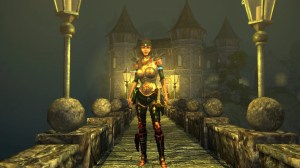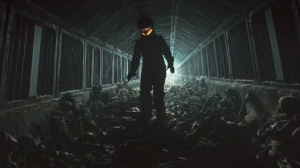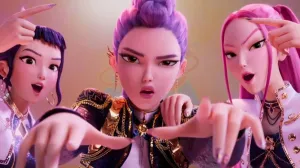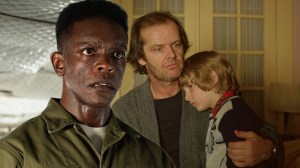
There is no better managed franchise in direct market comics than the mix of miniseries, one-shots, and various other formats which compose the “Hellboy universe” today. While Hellboy began as a character solely conceived of by Mike Mignola (with help from John Bryne and Mark Chiarello on the initial miniseries), it has sprawled into something much larger maintained by a wide array of writers and artists, sometimes maintaining its tone and approach beyond even its own world with the likes of Joe Golem and Baltimore. Hellboy Winter Special 2019 distills the creative diversity and consistent quality into a self-contained collection of spooky, snowy stories perfectly suited to long January nights.
Videos by ComicBook.com
Each of the three tales found in its pages feels perfectly at home within the realm of Hellboy comics, even if only one actually features the eponymous hero. They all accept the occult as something real while maintaining it as a mysterious force that flickers into mortal lives, changing them dramatically before fading with a new dawn. That shared approach ensures Hellboy Winter Special 2019 is a coherent read, even when ranging between time periods and artistic styles. The quality of storytelling and love of folklore present in each ensures readers won’t be let down by a single entry, and will likely find something they’ll want to return to during future winter seasons.

“The Miser’s Gift”
The first story seems to be the apparent standout as well. While it features Hellboy, he primarily offers a bit of grounding and natural cause for exposition allowing for a ghost story to be told before being lived. He is a witness to events in Budapest and a guarantee that events will become stranger than expected.
It’s the backgrounds and characters depicted by Laszlo that fill the ghost story with life (and death), though. He depicts two versions of Budapest separated by several centuries of time. As readers and characters move between panels and versions of the same place, it’s easy to detect how reality is morphing. The old streets of Budapest aren’t simply defined by a lack of modernity, they play out like illustrations in a book of folklore for children. Buildings twist in the night sky, which itself is exaggerated with a moon and stars plucked from The Little Prince. This works beautifully with characters whose faces are defined by big eyes and generous expressions. It’s this style that transforms a relatively small scope into something wondrous and memorable.

“The Longest Night”
The second tale, in contrast, is much more contained, unfurling almost entirely in the confines of a small cabin. It’s a story built around a single twist that’s far from surprising. However, del Duca’s depiction of the isolated mountainside and ability to present truly terrifying monsters (a skill refined over the course of Shutter) makes everything work. There’s nothing poetic about the justice being depicted, but the setting and final moments of horror all raise this installment well above its too familiar plot.

“The Beast of Ingelheim”
The final story moves away from the explicit confrontations found in the first two-thirds of the issue in favor of a more ambiguous (and cruel) note. It’s a sad tale that broaches the fanaticism and terror created by men who believe themselves to be naturally superior to whatever they deem a monster. That darkness is well developed across each page as more blood and violence seeps in, sometimes beneath the guise of righteousness. It stumbles in its final moments, unable or unwilling to parse why its narrator is telling this story and what led to this change of heart, but the darkness itself is so potent as to still ensure the overall effect.
Individual responses to these stories are bound to vary. The impact of any given narrative will be a matter of taste, although Mignola displays a deft hand with recontextualizing folklore that very few in comics can even approach. Yet the defining aspect of Hellboy Winter Special 2019 is not the selection of ghost stories or how each script presents them, it’s the quality of artwork and storytelling that ensures even a middling idea rises above humble aims. Each artist captures a different style of horror, ranging from the campfire stories of “The Miser’s Gift” to the depressed etchings of “The Beast of Ingelheim.” They instill these tales with a potent mood and individual moments that demand readers linger for a while. It’s a testament to the artistry and talent that began with a Mignola sketch and has come to attract many of today’s best artists to a franchise where each and every comic is worth a look.
Published by Dark Horse Comics
On January 15, 2019
Written by Mike Mignola, Chris Roberson, and Scott Allie
Art by Márk László, Leila del Duca, and Andrea Mutti
Colors by Dave Stewart, Michelle Madsen, and Lee Loughridge
Letters by Clem Robins
Cover by Mike Mignola and Dave Stewart








